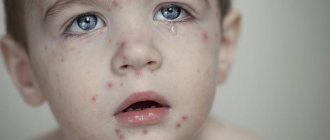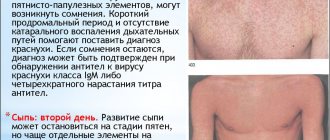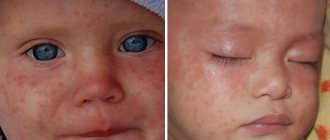In this article we will tell you:
- How does PINA differ from myopia?
- Forms of accommodation disturbance
- Symptoms of false myopia. How to diagnose it
- Prevention and treatment of PTS
When our eyes are healthy, we see clearly at any distance. But it also happens that even a healthy person is temporarily unable to examine distant objects in detail. This phenomenon is called habitual excess strain of accommodation (HAT) or false myopia. The ability of the eye to clearly distinguish objects far and near depends on its three elements: the ciliary muscles and ligament and the lens. The very concept of accommodation spasm is not exactly what will be discussed in this article. A true spasm of accommodation is, as a rule, an acute process that occurs quickly, in contrast to PINA, and accounts for approximately 3% of all accommodation disorders.
Ophthalmologists call the leading cause of false myopia visual strain, which appears if a person does not follow the rules of working at a monitor or reading. After relaxation, the ciliary muscle returns to normal and vision is restored. PINA in children occurs for several reasons: unbalanced diet, vitamin deficiency, incorrect body position when reading, poor circulation in the neck, high eye strain, and the use of incorrect diopters for near work.
In an adult, false myopia most often appears in the case of constant eye strain, incorrectly selected diopters for close work, overwork, and poor sleep. Let's add age-related hormonal imbalances and osteochondrosis: all of these are common causes and often lead to disruption of the ciliary muscle.
How does PINA differ from myopia?
Let's figure out how to distinguish a spasm of accommodation from true myopia. The first manifests itself in a temporary loss of clarity of vision. With myopia, the ability to see well is lost for a long time and is rarely restored by itself. However, with false myopia, spasms can reach a force that impairs vision by as much as 3 diopters.
But there is something in common between them: with both ailments, there is a blurring of vision and a feeling of blurriness of distant objects. If you confuse PINA with myopia and buy glasses without consulting a doctor, you can develop true myopia.
Prices for diagnostic services and consultation with an ophthalmologist
| Type of medical service | Service price in rubles |
| Complete ophthalmological examination | 1000 |
| Complete ophthalmological examination of children | 1100 |
| Consultation with an ophthalmologist for eye disease in an adult | 500 |
| Consultation with an ophthalmologist for eye diseases in children over 3 years of age | 700 |
| Selection of simple glasses with a prescription | 500 |
| Selection of progressive, office glasses with prescription | 700 |
| Selection of contact lenses with training and prescription | 1000 |
| Selection of contact lenses without training | 600 |
| Training in the use of contact lenses | 400 |
Treatment methods
Hardware treatment of eyes in children
Treatment with ophthalmological devices makes it possible to achieve a lasting therapeutic effect in young patients. In some cases, it is possible to completely get rid of pathologies such as amblyopia, impaired binocular vision, and false myopia.
Perifocal
The lenses have a corrective effect for myopia. Perifocal models are aimed at correcting central and peripheral vision, which provides excellent visibility and a pronounced therapeutic effect.
Ophthalmological device "Rucheek": accommodation training
The device is a system in which light emitters are located at different distances from the patient’s eyes. Training is carried out by adjusting the image position and the speed of changing “pictures”.
Ophthalmological device "Cascade"
Impact on the visual function of the eyes with light and color stimuli that dynamically move over a certain distance in a closed tube. Particularly effective for accommodation disorders and restoration of binocular vision.
Ophthalmological treatment device "Visotronic M3"
The ophthalmic myotrainer relaxer has a complex effect on the organ of vision and oculomotor muscles. Particularly effective for eye accommodation disorders, as well as during myopia, hypermetropia and computer syndrome.
This is interesting
Blue light and optical coatings that reduce its transmission
Do I need to correct my vision and why is it so important?
What diseases can be diagnosed based on the condition of the eyes?
Preserving vision and eye health with Crizal Eyezen lenses
Which spectacle lenses should I choose? Choose your glasses with Crizal Corner
Forms of accommodation disturbance
Violation of accommodation is expressed in several forms:
- accommodative asthenopia causes discomfort and eye fatigue during visual work. Often there is a feeling of a film on the eyes. This disorder is often found in older people, as well as in those who spend a lot of time looking at smartphones and computer screens in inappropriate diopters and without making changes.
- spasm of accommodation or PINA manifests itself in a change in the state of the ciliary muscle. Due to tension, it contracts pathologically and remains so for some time. It becomes difficult for a person to look into the distance, his eyes get tired. Difficulties also arise when viewing objects located close to you: their outlines seem blurry and indistinct.
- paralysis and paresis. With accommodation paralysis, it is impossible to see anything up close. The pupil dilates, the ciliary muscle is paralyzed and does not allow the lens to change its curvature. And it’s no longer possible to read small fonts at close range. With accommodation paresis, the ability to distinguish small details or objects at close range is weakened. Paresis of the ciliary muscle moves the closest visible point away from the eye.
- Both diseases develop suddenly and in a short time. Their important accompanying symptom is pupil dilation. There are cases when paralysis of accommodation appears in one eye, and paresis in the other.
- age-related weakening of accommodation or presbyopia begins at 40-45 years. All nearby objects appear blurry, and the reason for this is the aging lens of the eye. It loses its elasticity and you are no longer able to focus your vision like you did when you were younger.
Sources
- Peinado G.A., Merino Sanz P., Del Cerro Pérez I., Gómez de Liaño Sánchez P. Unilateral accommodation spasm: Case report and literature review. // Arch Soc Esp Oftalmol - 2021 - Vol94 - N6 - p.285-287; PMID:30837173
- Starynets MO., Ocheredko OM. . // Wiad Lek - 2021 - Vol71 - N3 pt 2 - p.628-634; PMID:29783237
- Gedar Totuk OM., Aykan U. A new treatment option for the resistant spasm of accommodation: clear lens extraction and multifocal intraocular lens implantation. // Int J Ophthalmol - 2018 - Vol11 - N1 - p.172-174; PMID:29376009
- Sukhija J., Dogra MR., Zadeng T., Ram J. Functional spasm of accommodation: Changes on scheimpflug imaging. // Oman J Ophthalmol - 2014 - Vol7 - N3 - p.150-2; PMID:25378883
- Lindberg L. // Duodecim - 2014 - Vol130 - N2 - p.168-73; PMID:24605432
- Kanda H., Kobayashi M., Mihashi T., Morimoto T., Nishida K., Fujikado T. Serial measurements of accommodation by open-field Hartmann-Shack wavefront aberrometer in eyes with accommodative spasm. // Jpn J Ophthalmol - 2012 - Vol56 - N6 - p.617-23; PMID:23008062
Symptoms of false myopia. How to diagnose it
False myopia may appear suddenly or develop gradually and may last for several years. Its symptoms are very similar to those of true myopia:
- it becomes difficult to view distant objects
- unpleasant symptoms occur, such as pain, burning, stinging, scleral hyperemia, photosensitivity, lacrimation;
- eyes get tired quickly;
- the person becomes inattentive and loses the ability to concentrate;
- headaches appear.
In addition, experts call increased sweating of the palms one of the symptoms of false myopia.
Additional symptoms include trembling of the eyelids, differences in the size of the pupils, and involuntary movements of the eyeballs.
If you notice symptoms of visual impairment in yourself or your children - they begin to constantly squint, often rub their eyes - be sure to consult an ophthalmologist for a diagnosis and treatment. You should undergo a full examination including checking visual acuity, ultrasound diagnostics of the condition of the eyeball, measuring intraocular pressure and examining the fundus for light reflection.
Drops to relieve spasms and other preparations with lutein
Lutein is the only drug that has nothing to do with the mydriatics we discussed above. Most often, this substance (lutein) is found in vitamin and mineral complexes designed specifically for eye health. What is its advantage, and why do ophthalmologists actively advocate its use in eye accommodation? The fact is that, unlike drops containing mydriatics, preparations with lutein do not dilate the pupils, since they do not affect either the circular or radial muscles of the eye. The active component specifically relaxes the ciliary eye muscle and lens. The action is very mild, and the drugs themselves are developed based on natural ingredients. Therefore, they have no contraindications or side effects (except for allergic reactions, but these are extremely rare) and can be used even by children, but only after consultation with an ophthalmologist.
Prevention and treatment of PTS
To prevent the development of the disease, do not neglect the following requirements:
- work or read in a well-lit room;
- do not read or look at the screen at close range for a long time;
- take eye breaks;
- master and do not be lazy to perform simple eye exercises;
- maintain a sleep schedule;
- walk outside or play sports;
- eat a balanced diet;
- Treat concomitant eye diseases in a timely manner.
PINA can last from several months to several years and often develops into stable myopia. According to statistics from the Russian Ministry of Health, almost 70% of children suffer from myopia by the end of school.
But there is good news: spasm of accommodation is a reversible phenomenon and is highly treatable. Together with your ophthalmologist, you can choose any of the methods that suit you:
- select medications to relax the ciliary muscle;
- undergo a course of physiotherapeutic procedures;
- train regularly using specially designed online programs;
- consider the possibility of laser correction.
Timely treatment of accommodation improves visual functions and prevents the disease from developing further. Accordingly, you significantly increase your chances of having good vision throughout your life.
Diagnostics of the accommodative apparatus
Violation of eye accommodation, symptoms
- Violation of accommodation of any kind can only be detected by an ophthalmologist. Very often, accommodation disorders are detected during the selection of spectacle correction and on the basis of the patient’s characteristic complaints.
- Remember, in childhood, disorders of the accommodative apparatus lead to the development of myopia.
- An objective examination consists of: visometry, refractometry, examination of the optical media of the eyes, examination of the fundus, measurement of IOP, determination of the nature of vision, determination of convergence, volume and reserves of accommodation, fusion reserves of both eyes.
Treatment of accommodation
After a thorough diagnosis, ophthalmologists at our clinic “OPTIKA-RADUGA” prescribe the optimal course of treatment, which may consist of several stages:
- Individually selected course (10 – 15 sessions) of hardware procedures: Magnetotherapy;
- Laser stimulation;
- Paraorbital massage;
- Color therapy;
- Classes on the Visotronic 3M ophthalmic simulator.
- In childhood and adolescence, we recommend special spectacle lenses “Perefocal” and “Anlauf”, progressive and, in some cases, bifocal lenses;
Risk group
People of different genders and ages are susceptible to pathology. Violation of accommodative processes is especially common in patients with chronic diseases. At risk:
- children of preschool and school age who are learning to read spend a lot of time reading books or watching TV, smartphones, and computers;
- office workers and people who work on computers;
- people who have been diagnosed with diseases of the vascular system;
- patients who have recently undergone surgery;
- those who work with hazardous substances, chemicals, radiation.
Citizens who are at risk are recommended to visit an ophthalmologist 2-3 times more often than others. If pathological changes are detected in time, treatment can be started promptly and vision can be effectively corrected.
Our advantages
"Moscow Eye Clinic" is a modern medical institution that provides a full range of professional services in the field of ophthalmology. The clinic has at its disposal the best examples of modern equipment from the world's leading manufacturers.
The Clinic employs leading domestic specialists with extremely extensive practical experience. Thus, a surgeon of the highest category Natalia Ivanovna Fomenko consults at the clinic. Thanks to the professionalism of doctors and the use of modern technologies, MGC guarantees the best treatment results and the return of vision. By contacting the Moscow Eye Clinic, you can be sure of quick and accurate diagnosis and effective treatment.










